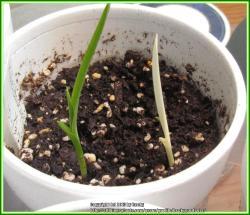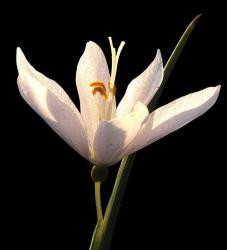I'd love to find a way to create or buy a home tissue culture gel to continue albino experiments, but so far it looks like most have some nasty chems (and lots of dire warnings, including the need to check with local authorities before using, and harboring of viruses that can contaminate without proper handling) that normally include BAP and PPM. Like the warnings given about chems used in converting dips to tets (they can actually lodge in human tissue...) I'm intrigued but stymied. Do you know of any nutrient gels that would work and also be safe for general use around clumsy humans?
I'm encouraged by the idea that nitrate, delivered to roots via half-strength solution of a liquid fertilizer (like miracle-gro, I assume) has been mentioned as an adjunct to the sugar feeding via the leaves. That sounds like a safe route and only occurred to me to try after it was too late with my previous seedling. I wonder if the "gel" part could be made from some easily obtainable neutral material or medium, with just this weak fertilizer added at home?
My supposition is based on: "Albino maize was grown to the stage of ear formation by feeding sucrose to the leaves and nitrate to the roots."
http://www.nrcresearchpress.co... ... And ... "Irrigate the plants with a houseplant fertilizer, such as Miracle-Gro, to provide adequate mineral nutrients. Use fertilizer at about half the rate the label recommends to avoid overfertilization."
http://www.madsci.org/posts/ar...
In my experience, the seedlings did quickly show some tiny level of greeness, after starting out almost a translucent white, with each seedling attaining a different level of yellow or green to otherwise healthy growing leaves. But, I suppose a maturing plant that is more or less fully albino could also be kept indefinitely on a sugar-nitrate regimen?
Keeping my fingers crossed that more info is forthcoming and some additional guidance might be available to those of us who'd love to have a resident albino daylily at home!


